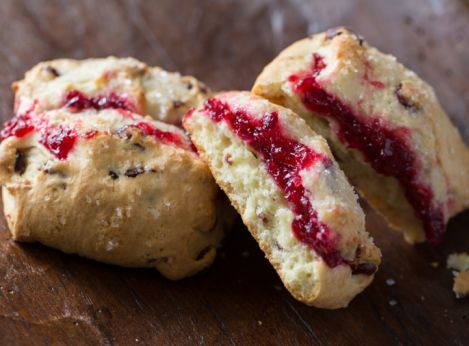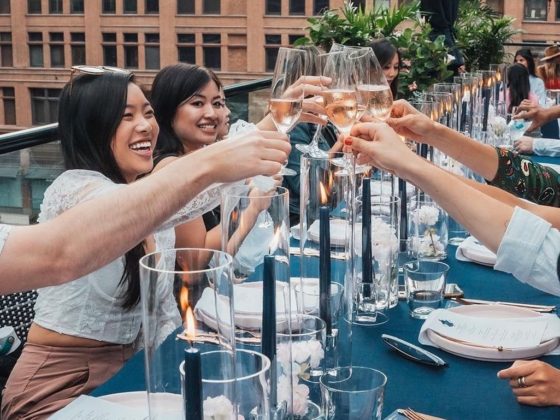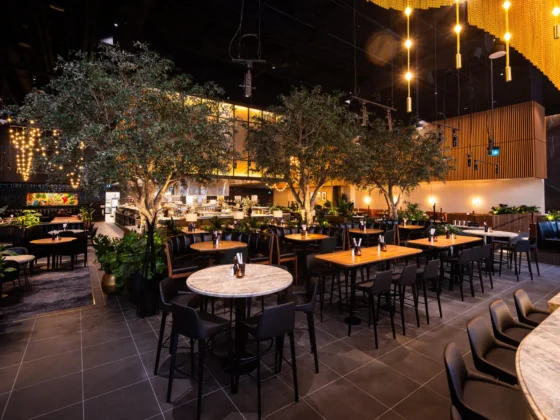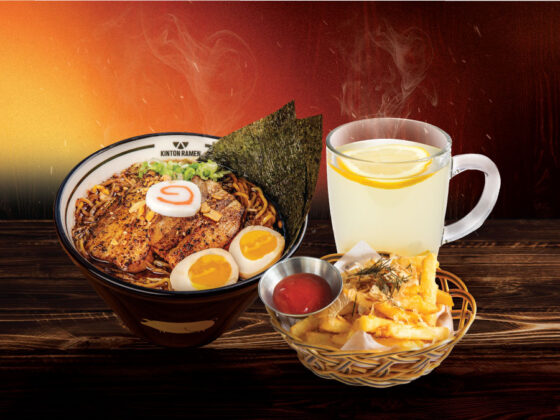
In light of the tepid response to Starbucks’ La Boulange pastry launch, Vv Magazine’s Jessica Vomiero takes a look at the American coffee company’s desperate attempts at reinvention and why it’s fallen short.
If you’ve walked into a Starbucks recently, you may notice a few changes. You’ll likely indulge in the unfamiliar smell of Paris-inspired treats. That perfectly-chosen, not-too-edgy background music is likely a Spotify-customized playlist.
These are only a few examples of the now 44-year old coffee giant’s several attempts to expand its specialties beyond the coffee market. In 2012, the coffee giant bought the L.A. based bakery La Boulange for over $100 million in an effort to boost its food sales. Shortly after, the concept of Starbucks Evenings was introduced to increase night sales. This pilot program, which includes an expanded dinner menu and a selection of alcoholic beverages, is currently in effect across a few select branches including, Chicago, Seattle, L.A., Portland, Washington D.C., Atlanta and Orlando cafés.
ADVERTISEMENT |
In March of this year, the La Boulange menu was rolled out in Canada, and talk began to circulate about the implementation of Starbucks evenings in the Canadian market. A few weeks after the Canadian rollout of the La Boulange pastry menu, the company brought forward its disastrous Race Together campaign, which had baristas encourage customers to fight racism by writing “race together” on each beverage they served. The corporate misstep was one of the ugliest PR fails in recent memory.

Most recently, the company is entertaining the idea of online and mobile sales initiatives. One after the other, these ventures seem to fizzle out before they have a chance to take off.
Shortly after introducing the new and improved, Parisian-inspired menu in 2012, Starbucks quickly realized that their customers had favourites. Fresh-baked or not, regulars weren’t thrilled to discover that their favourite lemon-raspberry loaves had been replaced with fancy shmancy chocolate croissants. Months after the 2012 rollout, several original menu items were reintroduced.
As for Starbucks Evenings, coffee drinkers didn’t react as warmly as the Starbucks hoped to the prospect of booze. The program has yet to expand beyond its pilot locations, and speculation of bringing the program to Canada has coughed, sputtered and faded into the background.
ADVERTISEMENT |
For many Canadian customers, the launch of La Boulange was barely recognizable. This may have been the result of a blatant lack of advertising for fear of sparking a reaction similar to that of the 2012 American trial.
Why, might you ask, is a wickedly successful corporate giant trying to shake things up? Is there more to this identity crisis than simply a desire to develop the brand?
Your morning coffee line may be long and slow, but at HQ, the Seattle-based coffee vendor’s sales have plateaued. At the beginning of 2013, Starbucks enjoyed a growth rate of 9 per cent, while according to Forbes, the 2014 growth rate for stores came in at 5 per cent. While the coffee giant experienced a growth rate of 7 per cent in 2015, the majority of these profits haven’t come from their coffee. Instead, customers are opting for tea, and the chain is aggressively pushing its pastry sales to make up the difference.

According to the CBC, general coffee sales in Canada are down 3 per cent. The coffee market simply isn’t what it once was. Starbucks’ initial popularity stemmed largely from the indie culture propagated by the brand. Over the last decade, other coffee vendors have since adopted this tactic, attracting business away from Starbucks chain stores. For example, the rebranding of Second Cup, including a Steampunk coffee and tea brewing system, newly designed cups and a high-end, brighter environment, brought it much closer to emulating the Starbucks experience.
In recent years, the popularization of indie culture has prompted many millennials to seek out truly independent venues. Starbucks rose to success on the foundation of an artisan, youthful, avant-garde experience, but the company has begun to lose its original customers thanks to its success. Talk about shooting yourself in the foot.
ADVERTISEMENT |
It can be argued that the attempts to expand on Starbucks’ niche can be translated as a plea to reengage their core demographic – millennials. The CBC reported that millennials are driving up the demand for specialty drinks. Furthermore, they state that Starbucks’ introduction of alcoholic beverages is an attempt to transform the coffee shop into a “European-style café, so as to migrate slowly out of the coffee business and into the ‘refreshments and food business,'” according to Starbucks Canada President Rossann Williams.
According to an article in Inc., independent coffee shops are not being plundered by the reign of the coffee giant worth an annual $60 million, despite the fact that there’s a Starbucks on almost every corner. These shops boast an obsession with quality and have developed creative, localized options that offer the Starbucks customer a truly “indie” option.
All of these factors combined have reduced the global coffee brand to, well, another tacky chain store.
ADVERTISEMENT |
Vv Magazine sat down with Isabelle Hemond, the CEO of Branded Solutions Canada and Starbucks Consultant, and though she had plenty to say about the company’s new direction, she avoided offering any clear explanation.
Hemond said only that the company is extremely happy with the success they’ve enjoyed as a result of their recent endeavours, and that they will continue to push forward in the Canadian market.
“They launched [Starbucks Evenings] in a few cafes in the U.S. and it’s been a big success. We’re actually going to be growing the number of stores that will have that concept. We’re looking at it definitely in Canada and we’ve made a commitment to pilot it before the end of 2015 in one or more stores. We haven’t selected the markets yet but we’re working on it right now,” said Hemond.
ADVERTISEMENT |
Starbucks has recently confirmed, however, that they won’t be bringing Starbucks Evenings to Canada. Just like Americans, Canadians don’t go to their local Starbucks for a late-night drink, and don’t intend to. Comparable to La Boulange and Race Together, Starbucks Evenings is shaping up to be another tragic case of misbranding.
Then there’s the fact that Canadians have expressed a lukewarm welcome, at best, for the newly added La Boulange pastries. More obviously, however, the foremost Google search item in conjunction with the terms “La Boulange” and “Starbucks” is “failure.” Maybe that’s all you need to know.
ADVERTISEMENT |
According to Hemond, however, Starbucks has taken steps to localize products for the Canadian market. She uses the maple muffin as an example, the syrup for which is sourced from Quebec. She also mentions that Canadian retailers use locally sourced blueberries.
Starbucks is one of many corporate giants experiencing a mid-life crisis. The introduction of McDonalds’ McCafé initiative in 2010 is another example of this trend. However, brands such as Tim Hortons have successfully expanded their menu options over the years without significantly altering their brand and voice. Is the key to market longevity the ability to adapt to changing demands, or does luck determine who gets it right the first time?
One thing’s for sure. As Starbucks continues playing trial and error, the competition is brewing up something fresh.
ADVERTISEMENT |
Related Link: Coffee Makes You Less Efficient At Work
What do you think of Starbucks’ recent ventures? Have your say in the comments below or tweet us at @ViewtheVibe.





